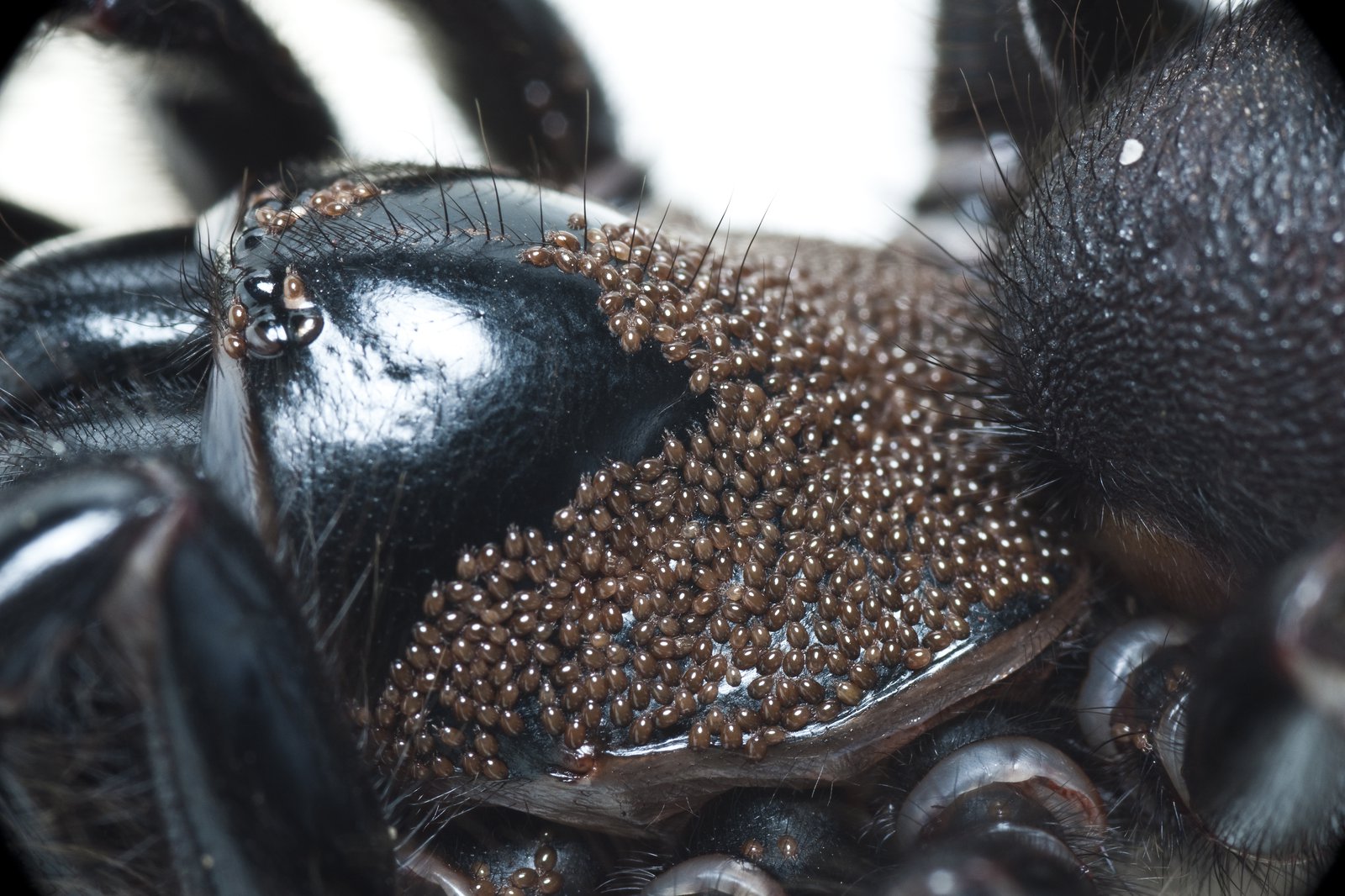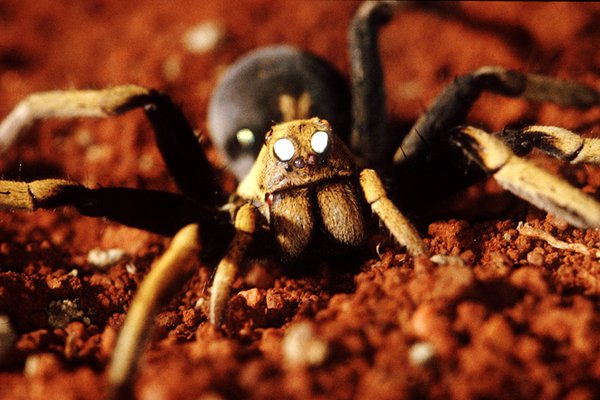Arachnology
Arachnology is the study of the group of animals called arachnids. Arachnids include spiders, scorpions, harvestmen, ticks and mites.

Arachnids are animals that have:
- eight walking legs
- one or two main body parts
- often predatory habits
- simple eyes
- a skeleton outside the body
About the Collection
The Australian Museum Arachnology collection is dominated by arachnids (spiders, mites, ticks, harvestmen, scorpions and other relatives). We also care for other animal groups that have eight legs, such as tardigrades (water bears), and several groups that have many more than eight legs: centipedes, millipedes and relatives plus velvet worms (onychophorans). The collection includes many type lots, and a third of these are primary types. Primary type specimens are the “name-bearers”, which are the original and ultimate reference specimens for understanding the identity of scientific animal names.
The emphasis is on New South Wales fauna, but with significant holdings from other regions that help us understand and interpret New South Wales species.
Highlights include the largest collection of funnel-web spiders in Australia, one of the largest collections of Australian harvestmen (Opiliones), and a small but significant collection of oribatid mites (which have a strong role in carbon cycling). The spider collection also includes examples of ancient lineages of Australian and overseas spiders such as Tasmanian cave spiders and liphistiids from Southeast Asia. We care for important historical collections of William Rainbow and Vernon Hickman, scientists who laid foundations for arachnid research in Australia.













